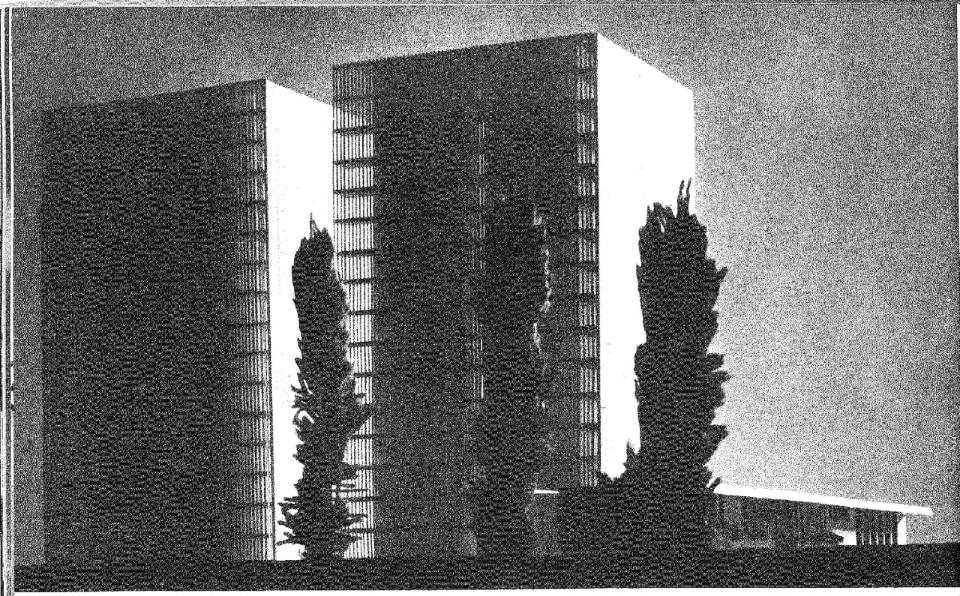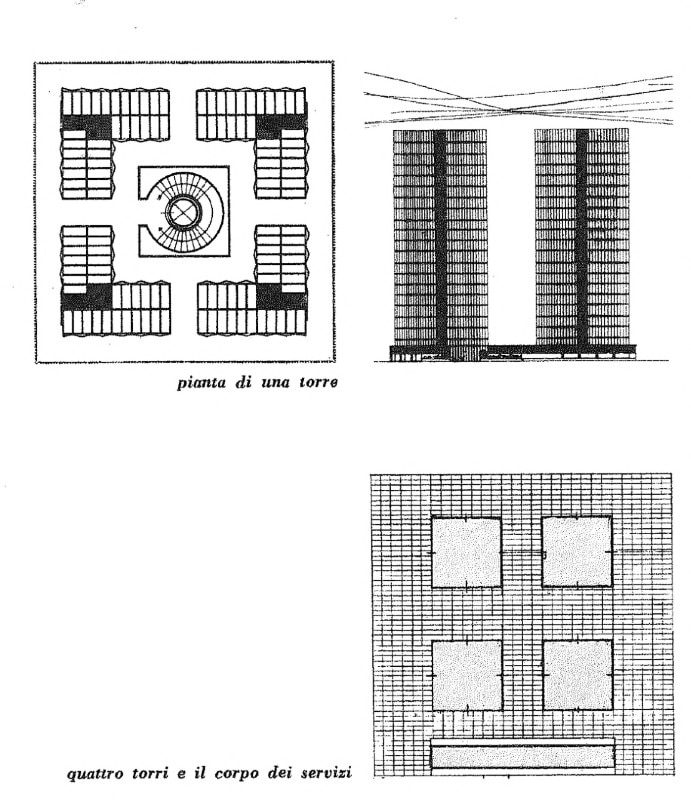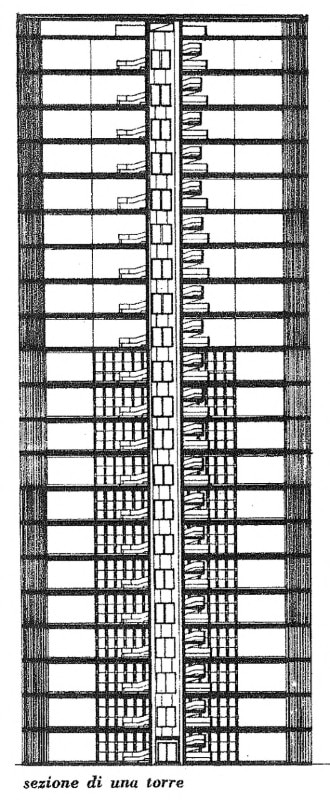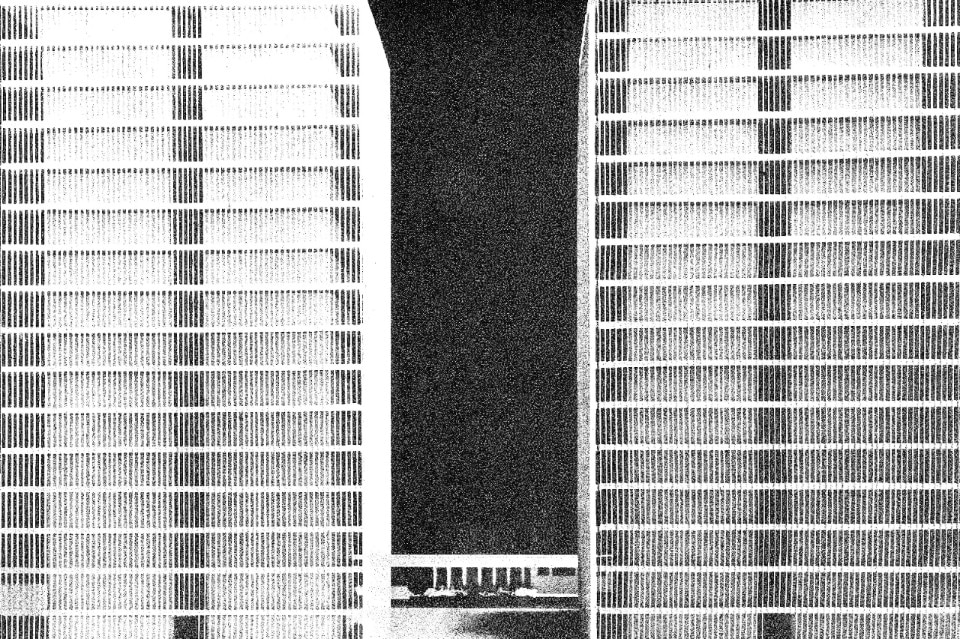We usually celebrate Nanda Vigo’s design works, light installations that follow the trends of kinetic art, and less so her actual architectural projects – which were courageous, daring, irreverent, just like her. This is the case with the project for the extension of the cemetery in Rozzano, the southern suburb of Milan, which she designed in 1959.
After a long trip to the United States where she had met Frank Lloyd Wright (with whom she was deeply disappointed), she returned to Milan and opened her own studio together with the engineers Corraglio and Giavanardi and the architect Cesare Tacchio, after being commissioned to work on the cemetery.

The idea of a tower-shaped cemetery is intended as a solution to the future saturation of the urban sprawl and the horizontal 19th-century European monumental cemeteries. With the great and rapid development of cities, in fact, cemetery areas have moved closer and closer to residential areas, depriving them of the possibility of growing any further.
And so Nanda Vigo designed her “Twin Towers'”, two light-filled buildings, which eliminated the gloomy atmosphere typical of a cemetery and any sort of burial classism, as each individual laid to rest in the tower would ideally be buried equally – no penthouse ambitions among the deceased.
The ground plan of the tower is quadrangular, the large staircase and lift are placed at the centre, and between the outer and inner sides of the double ring paths, there are the burial recesses. In a group of six or more burial niches, there is also the possibility of inserting a chapel. The façade consists of a series of glass windows and doors which can also be replaced with prefabricated brise soleils.

The theme of light, in this case, natural light, returns as the distinctive feature of her work. The cemetery towers dominate the urban fabric as if they were a kinetic work of art reproduced on an exaggerated scale. The search for the philosophy of the project remains the same: light “as a determining factor of transformations that cause personal psychological changes in the user”, as Vigo wrote in her biography Giovani e rivoluzionari (Young and Revolutionary).
Out of the whole project, only the chapel, offices, cinerary and florists’ shops were built. Nanda Vigo then placed a large boule by Lucio Fontana, an artist to whom she is deeply attached, in the entrance hall
This unfinished project still speaks volumes about how much today's architecture lacks an approach like Nanda Vigo’s.

Today - partly due to political, social and cultural fragility, partly because we have become accustomed to considering the disciplines as separate entities that should not be mixed – we have lost that idea of ‘artistic design’ that characterised the work of the great protagonists of the Italian Sixties and Seventies such as Alessandro Mendini, Ettore Sottsass Jr., Gaetano Pesce and the great Nanda Vigo, one of the few female names in the history of Italian design.
These designers break down all disciplinary barriers to achieve a totalising conception of spatial design, expanding their action from the single object to interior design and maintaining a constant reference to the functional world of architecture and design and the expressive and conceptual world of art.
Opening image: Twin Towers, Nanda Vigo. Courtesy Nanda Vigo Archive


